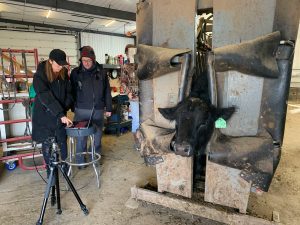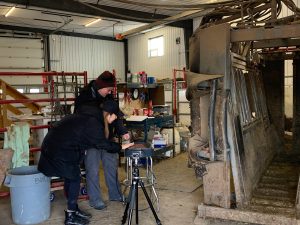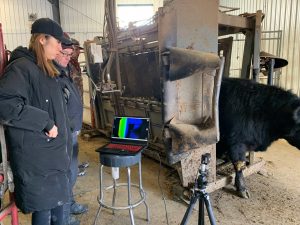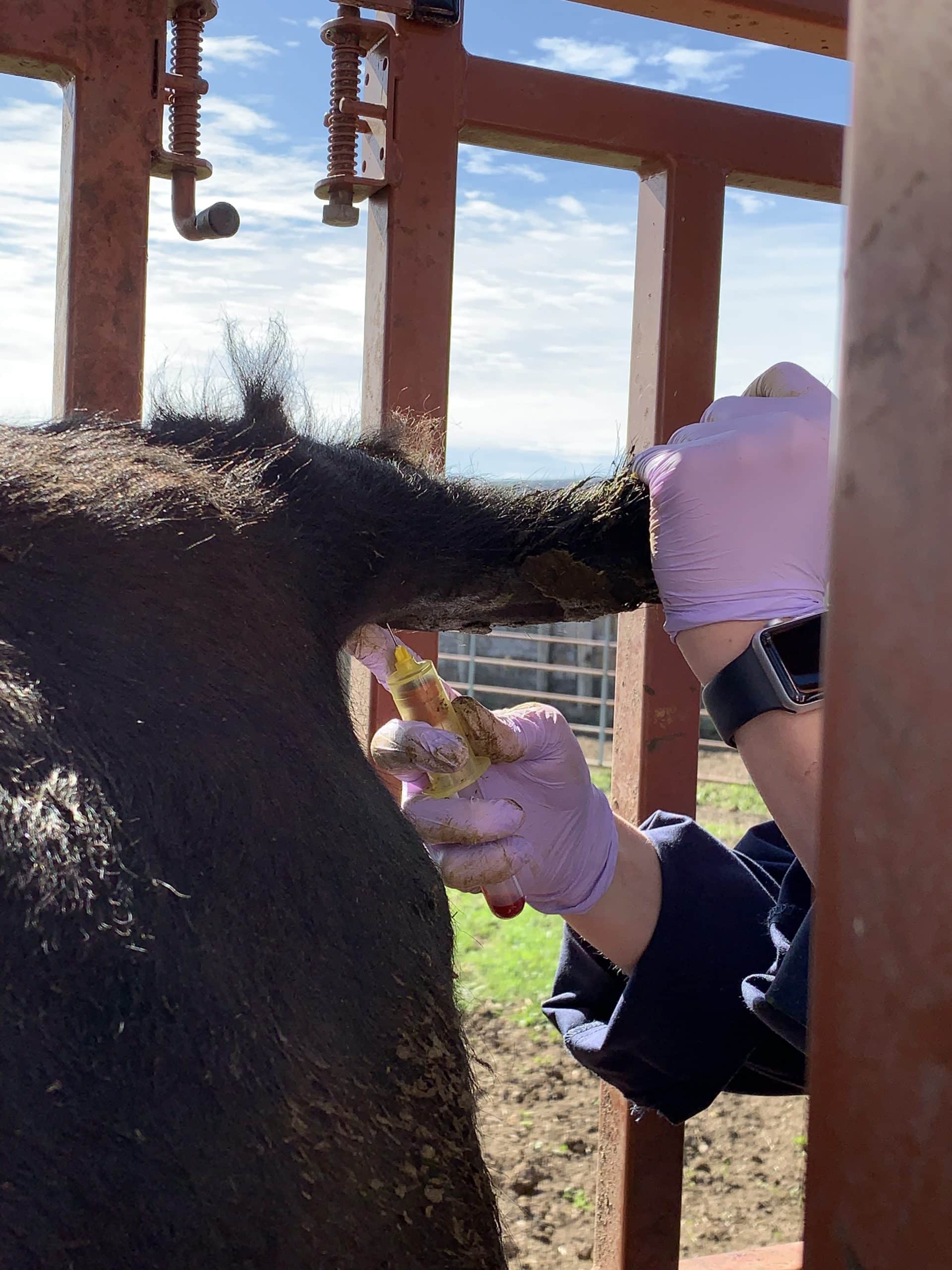
The research and development projects that are currently being undertaken by the Canadian Angus Association are both member driven and generously supported by the Canadian Angus Foundation.
The Association surveys its members continuously to identify areas of concern and need in order to direct research and development.
Our goal is to develop new tools and technology that improve the competitive advantage of Canadian Angus genetic both within Canada and across the globe.
Male Fertility Study
The Canadian Angus Association is pleased to partner with the American Angus Association and Kansas State University on a project to study male fertility. We know that fertility is the primary factor impacting operation profitability and sustainability. Bulls contribute to overall reproductive success (and profitability) of an operation to a large degree and a substantial opportunity exists to improve male fertility.
A large amount of beef bull fertility data already exists in the beef industry. The objective of this project is to study this information to better understand the genetics of male fertility. We are inviting members to submit their semen test information for use in this project. Click here for a spreadsheet that can be completed by you or your vet. Please include complete group information for all bulls tested (those who passed and those who did not). As with all research projects, producer information and animal identification will be masked.
The research team, based at Kansas State University and the University of Wisconsin, includes both reproductive biologists and geneticists. This is a 5-year project, funded by the USDA aimed to study the genetics of male fertility.
For more information or to submit your semen test data for use towards this project, please contact Canadian Angus Association Director of Science and Technology, Kajal Devani at email or at 403-537-5604.
Funders:

HIR Project
Cattle producers experience emotional and financial difficulty when animals get sick or die. That’s why your Canadian Angus Association has partnered with the Semex Alliance, American Angus Association and the University of Guelph to adapt the High Immune Response (HIR™) test that has previously been used in Canadian dairy cattle to fight diseases like Bovine Respiratory Disease (BRD) that impact the beef industry. BRD alone results in an economic loss of more than $100 million to the Canadian beef industry per year. Interestingly, immune response, an animal’s ability to fight off infections, varies greatly from animal to animal. This variation is related to the environment, e.g. nutrition, as well as animal’s genetic makeup. Some animals naturally have the genetic potential for higher immune response. These animals have the genetic potential to fight disease off more successfully, and are therefore at lower risk to develop disease.
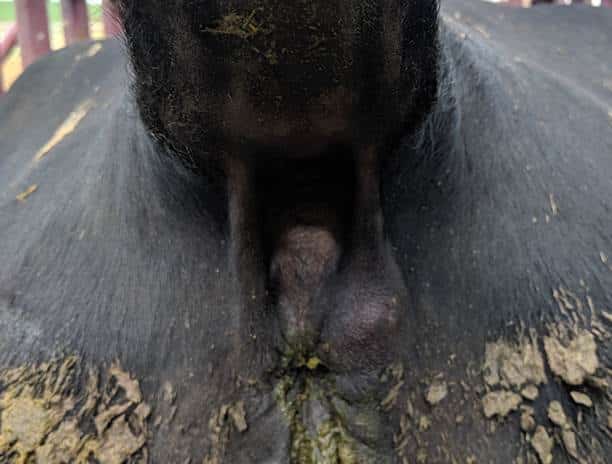
The genetic potential for HIR™ has been characterized in Canadian dairy cattle by the same team at the University of Guelph. Cows sired by high immune bulls, on average have higher colostrum quality, and have up to 20 percent lower incidences of disease. Dairy cows that have a high genetic potential to remain healthy are estimated to provide producers savings of more than $125 per year per head by avoiding losses in production and costs associated with disease. The Canadian dairy industry, through Semex Alliance, has been using the Immunity+® Plus EPD and the HIR test to select breeding stock that have the genetic potential for high immune response, thereby generating future generations of cattle that are at lower risk to develop disease, more productive, more profitable, and more sustainable.
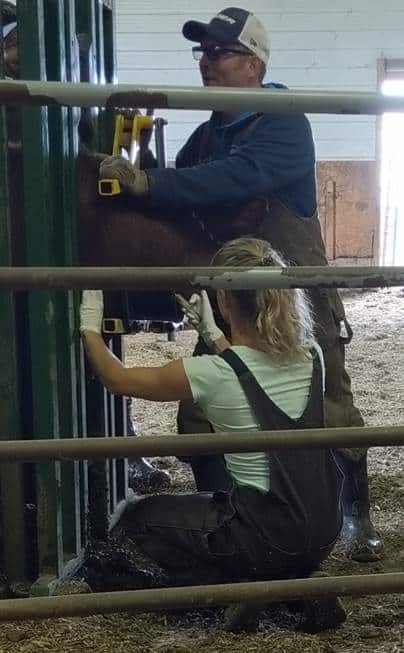
To adapt the HIR test and develop an Immunity EPD for Canadian and American Angus, the team started by measuring Canadian and American Angus animals for immune response (both cell-mediated and antibody-mediated). Measuring for both types of immune response involves processing calves through a chute on three different occasions. On Day 0 we take a blood sample from each animal to establish a baseline for antibodies to the test antigen. Each animal receives an intramuscular injection of the antigen. The animals then get 14 days to build an immune response, by way of antibodies, to the test antigen. On Day 14, we take a second blood sample to measure the amount of antibodies each animal generated. We also give the animals an intradermal injection to measure animals’ cell-mediated response to the test antigen. One day later, on Day 15, we measure the dermal response to the intradermal injection.
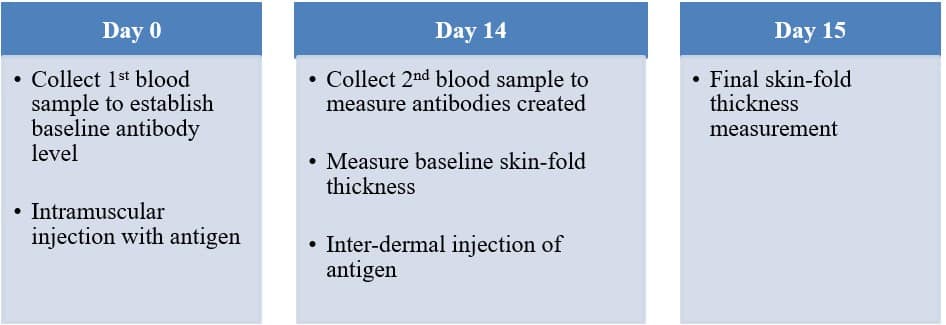
DNA samples are also collected while cattle are being processed for immune response measurements. Each animal will be genotyped using the AngusGS test which provides members with parentage verification and GEPDs for these animals. It also helps the project team develop an Angus-specific high immune response test and GEPD for the trait. To participate in our High Immune Response project and have your calves phenotyped for immune response, please contact your Canadian Angus office.
This project is funded by Genome Canada. Industry partners have come together to develop this test and EPD for Canadian and American Angus cattle because cattle that are naturally genetically, healthier are more productive. The consumer wants assurances that their beef is coming from healthy animals that are raised using sustainable practices. Genetic selection is often the best solution available. High immune response is hereditary and can be selected for in breeding programs. A high immune response test and EPD will help Angus producers identify animals that have superior genetic potential for high health, allowing the industry to capitalize on all the benefits of healthier animals, including decreased use of antibiotics.
Testimonials:
We are excited to be working with the Canadian and American Angus Associations, along with our long-time partner the Semex Alliance to adapt the University of Guelph patented HIR™ technology for use in beef cattle. This Genome Canada funded project is a unique opportunity to develop a genomic test to enhance immunity in Angus cattle in a way that is similar to the Immunity+ program used by Semex for dairy cattle. The HIR™/Immunity+ breeding programs are so successful in part because of the high heritability of the traits used in the selection index. High immune responders have less disease occurrence, fewer disease treatments and if they do get sick the illness is less severe. High immune responder cows also produce a higher quality colostrum with more antibodies giving an additional advantage to progeny of HIR™ females. This technology is a proven winner for the producers, the cattle and the consumers looking for wholesome sustainably sourced food.
Dr. Bonnie Mallard, Professor of Immunogenetics, University of Guelph
Semex is pleased to help support the extension and validation of HIRTM technology in the Angus breed. There is a growing demand for high quality beef that is naturally better at withstanding diseases on the farm with less intervention. This project will lead the industry to greater efficiency for cow-calf operations and feedlots and greater appeal to consumers.
Dr. Michael Lohuis, VP Research & Innovation, Semex
I was excited to participate in the HIR project because this type of study is quantitative; it’s measurable. This is a way to precisely describe genetics for a very important trait. As a purebred member, any time you can have tools to develop better cow lines it’s a really big advantage. Embryo transfer and AI technology enable us to transfer genetics quickly, and this tool can help us identify the right genetics to use for future generations. The genetic potential for higher immune response will mean bulls staying healthy, their daughters staying healthy and having healthier calves. If the seed-stock industry wants to remain relevant and continue to get high prices for our bulls we need to develop the best genetics possible, and have ways to prove these things about our cattle. This is definitely a competitive advantage for Canadian Angus genetics.
Clint Morasch, Lazy MC
Funders:



3D Camera Technology
This research is being developed and validated through the University of Calgary and Lakeland College with the goal of helping members record subjective traits such as feet and leg structure with more accuracy and with greater ease.
In a recent member engagement survey that crossed the nation, Canadian Angus members identified that genetic selection tools for functional traits such as teat and udder structure, feet and leg structure, and health are necessary for profitable and sustainable beef production moving forward. The Association is committed to providing its members with tools lead to success. To this end, the Canadian Angus Association has forged a new partnership with the University of Calgary aimed at developing a three-dimensional imaging system for the measurement of feet, leg, teat and udder structure. Although members are able to use the BIF recommended scoring guidelines to assess their cattle for these traits, the scoring is subjective and time consuming. Thus, the Association is developing a chute side 3D camera system to help members accurately and quickly score structural traits on their animals.
The camera system being developed in partnership with the University of Calgary will be a mounted system that can be taken to a producer site and used to capture the 3D structural traits of beef cattle feet, legs, teats and udder as cattle walk by. Once the analytical software to capture, clean, and analyze images has been developed, there will be a validation process at both Lakeland College using the student run beef herd and at Canadian Angus member operations. The system will be tested for accuracy as well as practicality. Our goal is to deliver an easy to use, accurate system to help members capture data on structural traits that impact cow longevity, animal health and welfare, and producer profitability.
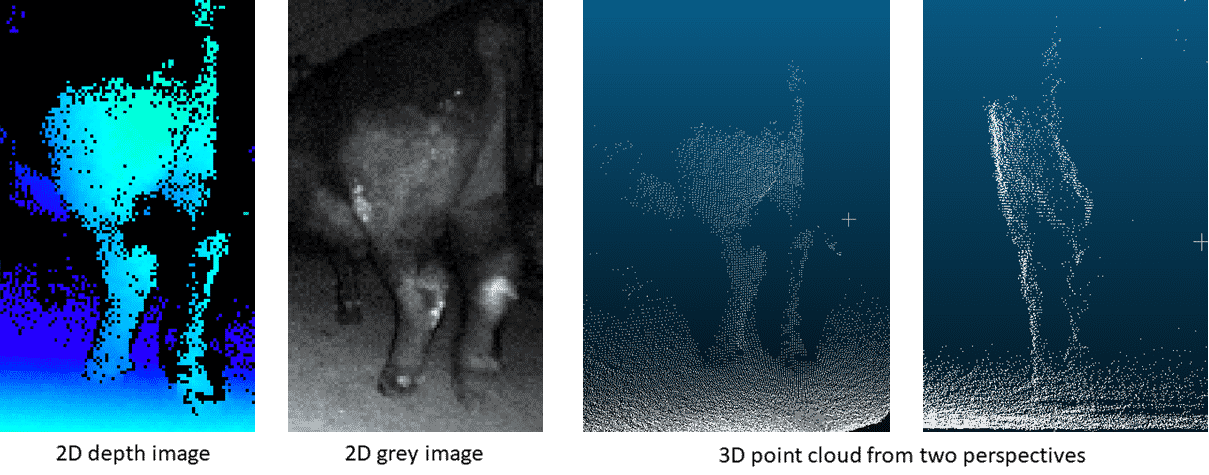
Funders:





